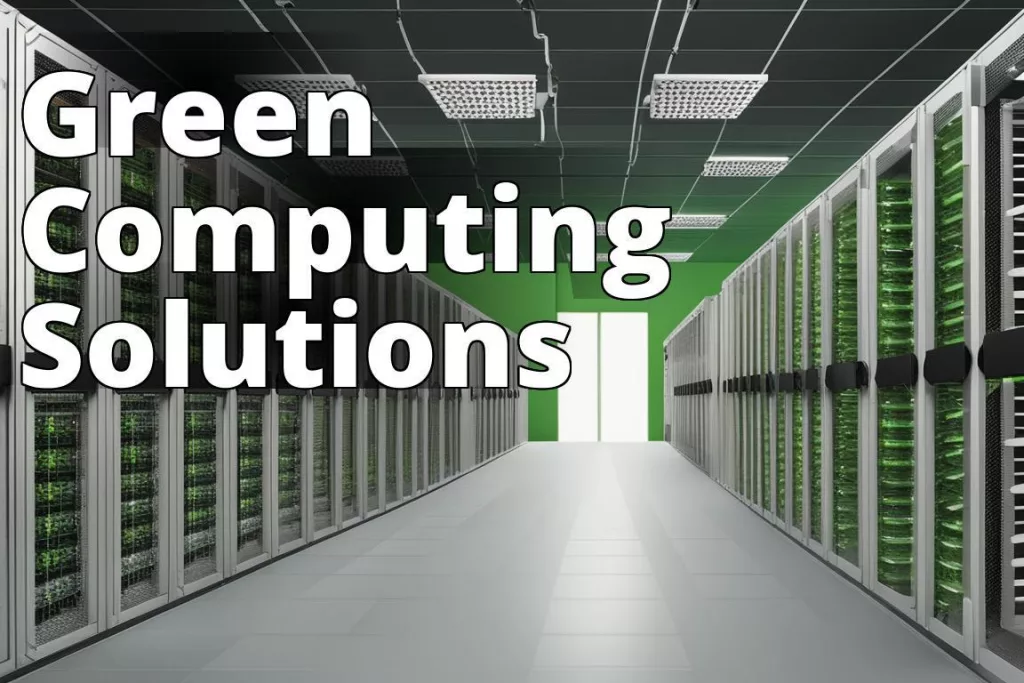As climate change advances and environmental sustainability makes its way into all parts of the economy, Green Software Engineering practices are gaining traction. Green software engineering is about reducing the environmental footprint of software systems.
Learn About Green Software Engineering Practices
- Understand the importance of green software engineering practices.
- Explore different green software engineering metrics.
- Discover tools used in green software engineering.
Green IT and Green Software Engineering
Green IT set the stage, focusing on reducing electronic waste and improving energy efficiency in hardware. But as software increasingly dictates hardware utilization, the spotlight has shifted towards Green Software Engineering. This paradigm emphasizes not just the operational efficiency of software but also considers its development lifecycle, deployment, and disposal stages through an environmental lens.
Green Software Engineering Practices
Green software engineering practices focus on developing and using software efficiently and effectively with minimal environmental impact. These practices aim to reduce energy consumption, carbon emissions, and overall environmental footprint. Key aspects of green software engineering include:
- Carbon-Efficient Software: Green software engineering emphasizes the development of carbon-efficient software that emits minimal carbon during its lifecycle.
- Energy Efficiency: Green software is designed, developed, and implemented to limit energy consumption, promoting sustainability and reducing environmental impact.
- Sustainable Development Life Cycle: Implementing sustainable practices throughout the software development life cycle helps in reducing resource consumption and promoting green initiatives.
- Environmental Awareness: Incorporating environmental considerations into software development processes, such as e-waste policies, energy-efficient hardware usage, and green coding practices, contributes to a more sustainable approach.
- Strategic Planning: Articulating a strategy that sets boundaries and targets the software development life cycle is crucial in ensuring green software engineering practices are effectively implemented.
To bring green computing and environmental sustainability ideas into the software development life cycle, consider the following recommendations:
- Design for Energy Efficiency: Optimize software to minimize energy consumption during development, operation, and disposal.
- Monitor Real-Time Power Consumption: Use techniques like dynamic code analysis to track energy usage and identify areas for improvement.
- Choose Energy-Efficient AI Models: Develop and use machine learning models that consume less power to reduce energy consumption.
- Implement Green Software Development Life Cycle Models: Utilize frameworks like the Green Reference Model to focus on development, usage, and disposal phases with a sustainability perspective.
- Enhance Cloud Frameworks for Energy Efficiency: Implement holistic cloud frameworks that map energy-saving opportunities to various cloud components for greener software development.
- Educate Software Developers: Raise awareness among developers about green software principles and the importance of sustainability in software development.
By incorporating these strategies into the software development process, you can contribute to reducing carbon emissions and promoting environmental sustainability within the technology industry.
The Green Software Development Life Cycle Model
The Green Software Development Life Cycle Model, also known as the Green Reference Model, focuses on three key phases: development, usage, and disposal. This model aims to integrate sustainability principles into each stage of the software development process to reduce environmental impact. The model emphasizes the importance of energy efficiency, sustainable practices, and green technologies throughout the software life cycle.
Key aspects of the Green Software Development Life Cycle Model include:
- Development Phase: In this phase, developers focus on designing energy-efficient software by controlling features with high power consumption, reducing data usage, removing unused features, and optimizing computational accuracy based on operational needs.
- Usage Phase: During the usage phase, real-time monitoring of power consumption is essential to identify modules that can be optimized for reduced emissions. Developers should adapt the software’s behavior to device power modes and operating conditions to enhance energy efficiency.
- Disposal Phase: Proper disposal and reuse of software components are crucial for sustainability. Extending the longevity of software use and minimizing resource requirements contribute to environmental conservation.
Green Software Engineering Metrics
Green software engineering metrics focus on measuring and improving the environmental impact of software development. Key metrics and tools include:
- Software Carbon Intensity (SCI): The SCI metric calculates the carbon footprint of software by considering embodied carbon, current carbon grid intensity, and total energy cost. It helps in assessing the energy and carbon profile of applications.
- Green Metrics Tool (GMT): An open-source tool that automates the generation of the SCI metric by measuring the carbon cost per unit of work in software development processes. It enables businesses to include carbon footprint assessments easily.
- Energy Efficiency Metrics: Metrics that track energy consumption and efficiency in software development, aiming to reduce resource consumption and promote green practices.
- Multi-Dimensional Metrics: Moving beyond single-dimensional metrics towards rich metadata-supplemented metrics offers better insights into digital sustainability and energy consumption of software.
By utilizing these metrics and tools, software developers can quantify the environmental impact of their products, optimize energy efficiency, and contribute to a more sustainable approach in software engineering.
Calculating Software Carbon Intensity
To calculate Software Carbon Intensity (SCI), you can use the following equation:
SCI=((E∗I)+M) per R
Where:
- E represents the energy consumed by the software in kilowatt-hours (kWh).
- I is the carbon emitted per kilowatt-hour of energy in grams of CO2 per kWh.
- M stands for the carbon emitted through the hardware that the software is running on.
- R denotes the functional unit, which defines how software scales, such as per user or per device[1].
To calculate your SCI score, follow these steps:
- Decide What to Include: Define the boundaries of your software by determining which components to include in the SCI score.
- Measure Energy Consumption: Measure the energy consumed by your software system, either directly through hardware devices or using models for estimation.
- Calculate Carbon Emissions: Calculate the carbon emissions based on energy consumption and carbon intensity.
- Determine Functional Unit: Identify the functional unit (e.g., carbon per additional user, API call, ML job) to standardize your SCI score calculation[3].
By applying this equation and methodology, you can quantify the carbon emissions of your software and work towards reducing its environmental impact by improving energy efficiency and sustainability practices.
Green Software Engineering Tools
Here are some tools for green software engineering:
- Green Spector: A tool explicitly focused on the environmental impacts of software, offering solutions to reduce energy consumption and promote sustainability.
- eMeter: Known for its green software solutions, eMeter provides tools to optimize energy efficiency in software development and usage.
- Sustainable Spaces: Offers software tools that prioritize energy efficiency and promote green practices in software development.
- Autodesk: Provides solutions for sustainable software development, focusing on minimizing energy consumption and environmental impact.
- Architectural Energy’s SPOT: A tool designed to enhance energy efficiency in software development processes, contributing to green software engineering practices.
These tools prioritize energy efficiency, minimize resource consumption, and promote green practices in software development and usage, aligning with the principles of green software engineering.
Conclusion and Future Work
Green Software Engineering represents a pivotal shift in how we approach software development in an environmentally conscious era. This study underscores its potential to significantly mitigate the environmental impact of our digital footprint. However, the future of this field hinges on continued research, innovation, and, crucially, implementation.
In closing, let’s not view Green Software Engineering as an optional add-on but as an essential paradigm for the future of technology. Together, we can code a greener world.
Supporting information
For those keen on delving deeper or taking actionable steps, consider exploring the following internal links:
- Green Computing Fundamentals
- Human Centered Design Techniques for Designing Environmental Big Data Systems
- Sustainable Data Centers: The Ultimate Guide
- Green IT: an overview
- Virtualization Technologies for Green Computing
Diving into these resources can provide further insights and tools to contribute to a more sustainable technological future.
Common Questions
Who benefits from implementing green software engineering practices in environmental data analytics?
Companies, researchers, and organizations benefit by reducing their carbon footprint and promoting sustainability.
What are some examples of green software engineering practices in environmental data analytics?
Examples include optimizing code efficiency, utilizing renewable energy sources, and implementing virtualization technologies.
How can companies adopt green software engineering practices in environmental data analytics?
Companies can adopt practices such as cloud computing, data center consolidation, and energy-efficient hardware.
What if a company is concerned about the cost of implementing green software engineering practices?
Initially, there may be some costs, but long-term benefits include reduced energy consumption and operational costs.
How can researchers promote the adoption of green software engineering practices in environmental data analytics?
Researchers can create case studies, provide training sessions, and collaborate with industry partners to promote awareness and implementation.
Who can provide guidance and support for companies looking to incorporate green software engineering practices?
Environmental consultants, sustainability experts, and software engineers specializing in green practices (such as RTEI!) can offer guidance and support.
Next Steps
Round Table Environmental Informatics (RTEI) is a consulting firm that helps our clients to leverage digital technologies for environmental analytics. We offer free consultations to discuss how we at RTEI can help you.


